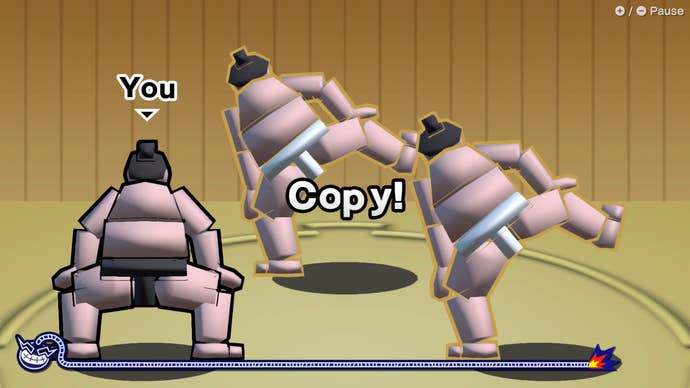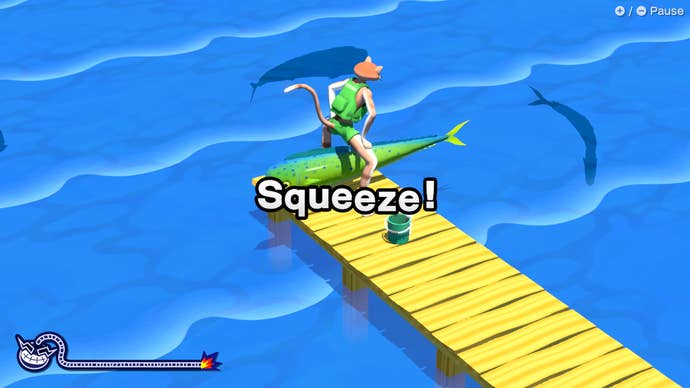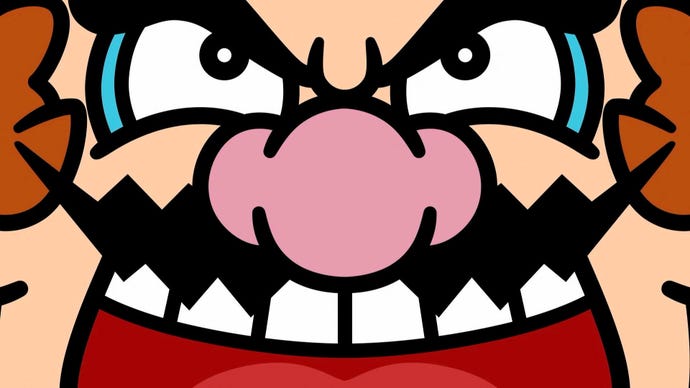WarioWare: Move It offers up some brilliant Mario Party-style multiplayer shenanigans – hands-on
WarioWare: Move It offers up some brilliant Mario Party-style multiplayer shenanigans – hands-on
I’ve always loved the WarioWare series, though in honesty I’ve always regarded it as a largely single-player endeavor. That opinion might be about to change, however – as after multiple swings at multiplayer action, the series might have its best ever offering in WarioWare: Move It.
Perhaps my attitude towards the series as best enjoyed solo comes from my history with it – I was there for that first game on GBA 20 years ago, and the joy of the game was all in unlocking new mini-games and challenging yourself to survive the ever-quickening nature of the game’s various challenges. Across sequels, multiplayer became a staple and even the focus of some later games – but honestly, none of it ever bought me quite the same joy as getting into the rhythmic zone of WarioWare’s ‘microgames’ on my own.
This is the second WarioWare title for the Switch, but it sets itself apart in a few key ways. For one, the previous title, Get It Together, featured more ‘traditional’ WarioWare mini games that can be traced right back to the series’ GBA origins. For this new title, the hint is in the name: Move It is focused on motion control, and in many ways should be looked at as a follow-up to WarioWare Smooth Moves back on the Wii.

This shift to motion control lends itself to multiplayer – it’s more fun to make a fool of yourself wriggling and flailing about in front of others, after all – but more has been done to underline that fact. Chief among the changes: a more meaty multiplayer structure.

In a brief hands-on with Move It, I got to experience a slice of each section of the game. Its story mode seems similar enough to past entries, telling the story of Wario and his gang of friends through short cartoon sequences and a range of stages. The ‘museum’ lets you replay any given mini-game you like from those you’ve seen in other modes. But the most interesting section was undoubtedly Party Mode.
Party Mode consists of multiple different frameworks, of which I only had the time to experience one: Galactic Conquest. The logic here is simple, placing the players onto a board game style board. At the end of the board is a rocket ship. There’s two goals: somebody has to reach the rocket to trigger the end of the game, at which point the player with the most points will be declared the winner.
In Galactic Conquest, the board is nefarious. Every space seemed to hide some sort of secondary effect when landed on; teleporting players where and there, resetting progress, even increasing the overall size of the board. Points are earned by placing higher in four-player competitive microgames, and so there’s an element of the frustrating-but-thrilling random in the nature of the board’s effects, but also strategy in potentially avoiding reaching the rocket ship before you’ve enough points to be declared winner.
It all feels a little bit Mario Party, and I loved it. Obviously this is only a framework to link together the microgames – but in the act of turning a title like WarioWare into a multiplayer experience, the framework really can make or break things in terms of effectiveness. And this format works.

It half works because the board game thing is simple, easy to understand, and makes a lot of sense. The second half is then taken care of by the microgames – silly and immediately graspable even by your grandma. It’s the best energy of the Wii era, delivered with Joy-Cons.
Microgames are now split into categories not just based on theme, but based on ‘stance’. The ‘Knight’ stance has you hold joy-cons like you’ve got a two-handed sword grip, for instance. The ‘Choo-choo’ stance sees you put your arms at your sides at 90 degree angles as if ready to emulate the movement of a steam train’s coupling rod. You assume these positions, and then each mini-game has to be played from these stances.

Nintendo wants to keep the list of exact microgames a secret and has an arcane list of what can and can’t be discussed. And so, honestly, it feels safer to simply avoid describing any of them at all. But trust me when I say that they’re very good. They straddle the line well of being quick to grasp, challenging, and deathly funny to spectate – which is pretty much exactly what is required for a game like this.
Some of them are bloody tiring, as well. The ‘Squat’ stance is exactly what you think it is, and actually has a few microgames that might test your flexibility and musculature in a way that’ll surprise for a party game perhaps best played with excited kids or after a few glasses of wine.
Anyway, the point is: finally, I’ve got a WarioWare game here that I can see myself playing multiplayer. I’ll pretty much always be there day-one for a WarioWare game’s story mode, if nothing else to nostalgize over 9-Volt’s classic Nintendo-themed mini-games. But with Move It, the franchise appears to finally have a multiplayer mode I can see myself digging out to play with family over the holiday season – or with friends after a few beers too many.
WarioWare: Move It will be out well in time for the festivities, too - it releases on November 3rd.

